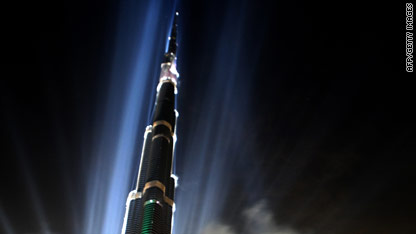Truth Vibrations
New member

– When the Burj Kahlifa officially opened its doors in Dubai last January as the tallest building in the world, the fanfare came weeks after the emirate suffered a debt crash.
The building became the latest evidence of the correlation between building booms and economic crashes, popularized in 1999 when analyst Andrew Lawrence released his first “Skyscraper Index,” which showed how completion of the world’s tallest buildings coincided with economic downturns, from the eight-story Equitable Life Building in New York (which opened during the 1873 depression) to the Petronas Towers in Kuala Lumpur (opening during the 1997 Asian Financial Crisis).
Now the latest version of Lawrence’s index raises alarm bells for China. “China skyscrapers are getting higher and higher, so it may be the start of a potentially bigger building boom,” the Hong Kong-based analyst for Barclay’s Capital told me.
“Is China building its way to a bubble?” Lawrence wrote in a report released Tuesday. “It may have started with the Tower of Babel, but over the past 140 years, there appears to be an unhealthy correlation between building the world’s next tallest building and an impending financial crisis: New York 1930, Chicago 1974, Kuala Lumpur 1997 and Dubai 2010. The world’s tallest structures rarely stand alone, with skyscraper building booms coinciding with economic corrections.
“Over the next six years, China will complete 40 percent of all the new skyscrapers under construction, expanding the number of skyscrapers in Chinese cities by over 50 percent,” Lawrence said.
Lawrence notes that world-record breaking buildings aren’t built in isolation – as the boom in China shows, and in Dubai before it, skyscraper building happens in cycles. “It starts when developers have lines of easy credit to finance projects … a time when there is more risk-taking by banks,” Lawrence said. “Also there is a desire to create a trophy building in your city, to leave some symbol behind.”
By the time the building spree is completed, the local economies have turned, Lawrence said.
One important caveat: As it now stands, there are no known plans in China – or anywhere else in the world, for that matter – to build a skyscraper that can knock the Burj Kahlifa off its mantle. At 823 meters, the builders of the Burj Kahlifa seem intent on it staying that way for a while (by comparison, the previous record holder – Taipei 101 – was just over 500 meters tall).
Still, past skyscraper building booms have augured economic downturns without producing a building with record-breaking heights, Lawrence said. There was a tall building boom in the 1980s in the U.S. that didn’t challenge the height of the Sears Tower in Chicago (the record holder then) – but that building spurt tumbled when the nation’s savings and loan industry crashed, Lawrence said.
So as skyscrapers rise in record numbers across the China city landscape, is a crash not far behind? “It’s worth investors paying attention to,” Lawrence said.
